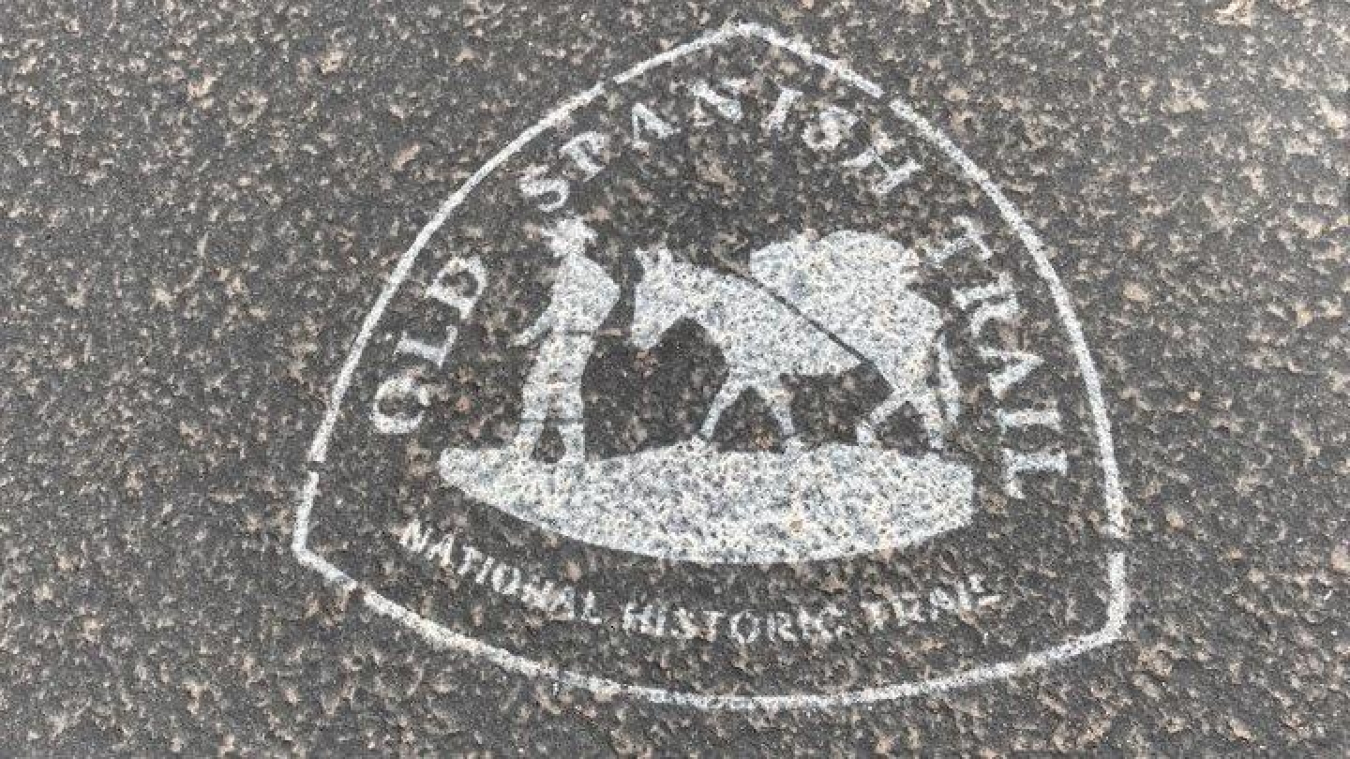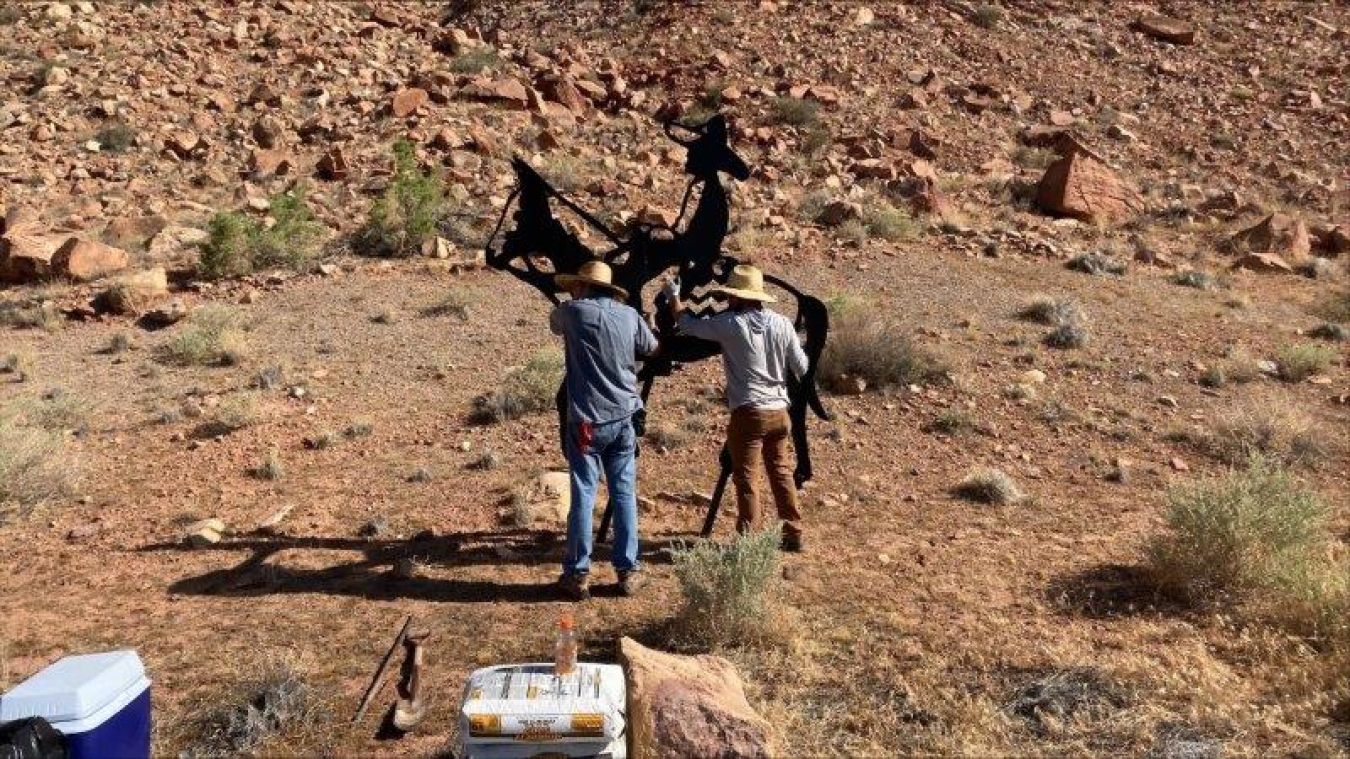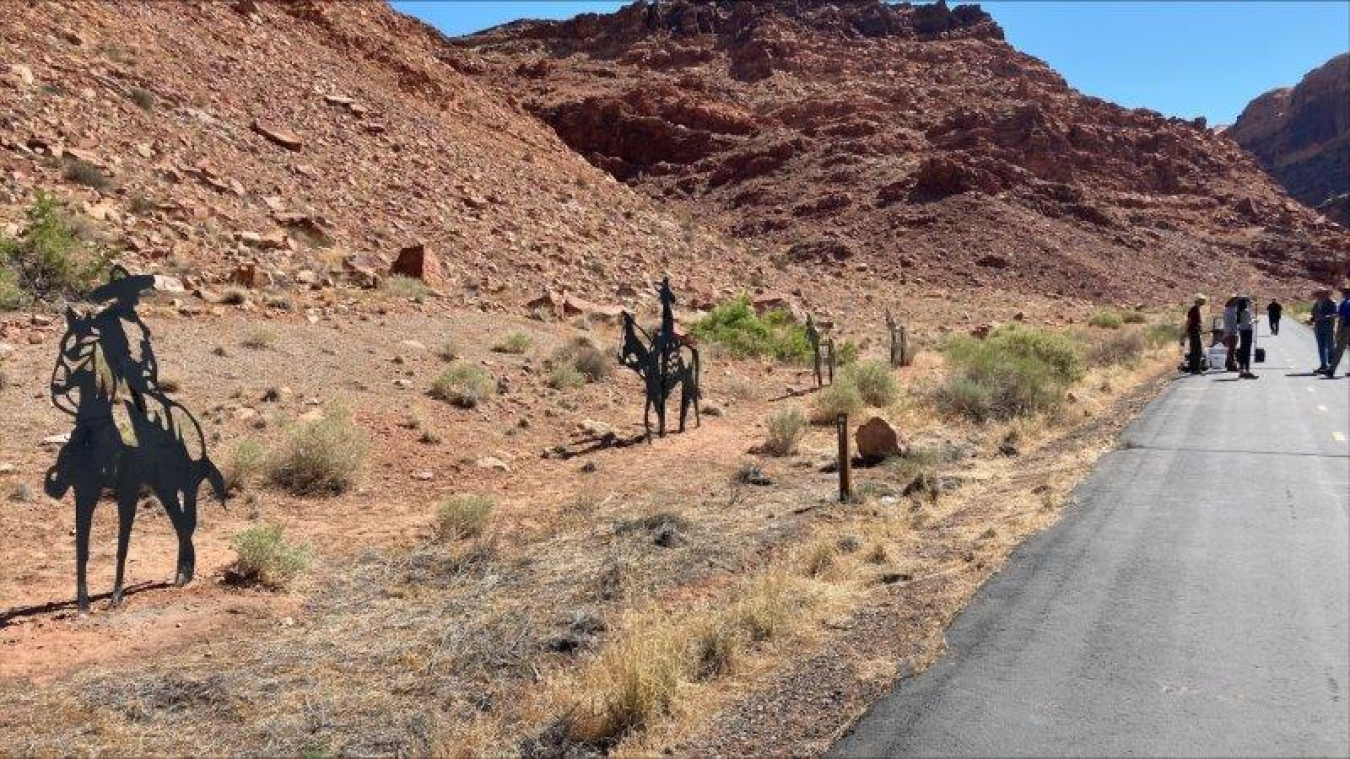History is all around us, and evidence of that was made plainly visible at the Moab Uranium Mill Tailings Remedial Action (UMTRA) Project this summer when the project collaborated with a local nonprofit to commemorate the historic Old Spanish Trail.
Office of Environmental Management
July 19, 2022
MOAB, Utah– It’s said that history is all around us, and evidence of that was made plainly visible at the Moab Uranium Mill Tailings Remedial Action (UMTRA) Project this summer when the project collaborated with a local nonprofit to commemorate the historic Old Spanish Trail.
The Canyonlands Back Country Horsemen had approached DOE with a desire to memorialize the Old Spanish Trail in Moab, part of the National Historic Trails system. Since the original trail crosses a portion of land owned by the Department, a legal agreement was finalized this spring allowing the group to access the property, which is offsite from the Moab UMTRA Project.
The monuments that the group employed to commemorate the trail are sculptures referred to as “silhouettes” cut from heavy grade metal, and measuring approximately 6-7 feet high and 4-5 feet long. Two of the four silhouettes are cutouts of mules with packs on their backs, while the other two depict individuals riding horses.
The silhouette designs were chosen to accurately represent the travelers along the Old Spanish Trail, which because of its terrain only allowed for pack animals like horses, mules and donkeys. Wagons were unable to get through the deep canyons, steep hills, rivers, and rocky, sandy land that made up this trail system.


Memorializing this portion of the Old Spanish Trail was especially important to the Canyonlands Back Country Horsemen. Director Steven Schultz said the Moab stretch of the trail was vital to travelers because it allowed them to cross the Colorado River more easily. Cliffs border the river for hundreds of miles in either direction, so the Moab location provided weary travelers a respite because they could cross on foot.
“Moab was essentially created because of this trail, and it is now a town full of trails,” Schultz said. A current count estimates that there are at least 277 Moab trails. The creation of the Old Spanish Trail helped launch the area into the 20th century, which now is home to the renowned Arches National Park.
To receive the latest news and updates about the Office of Environmental Management, submit your e-mail address.

